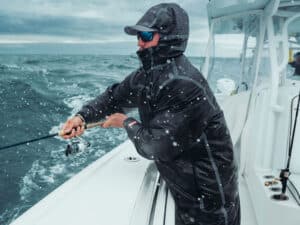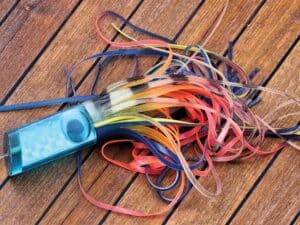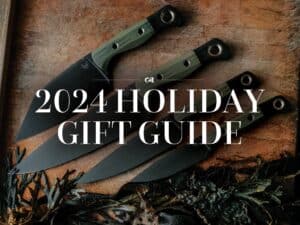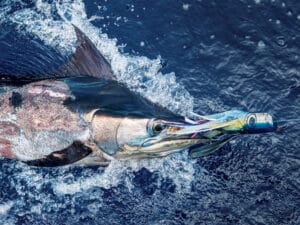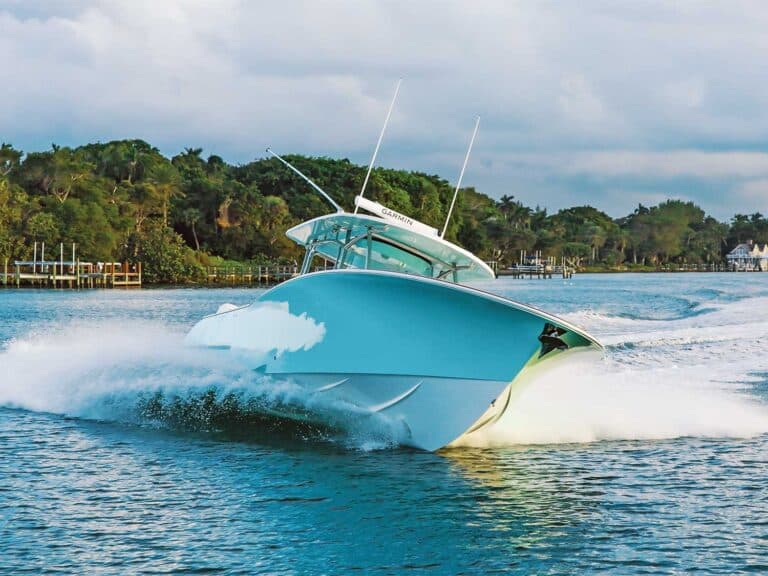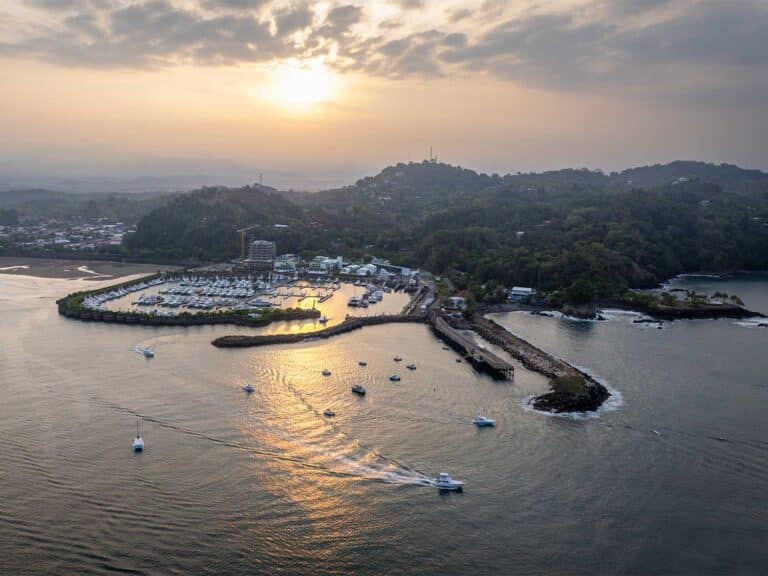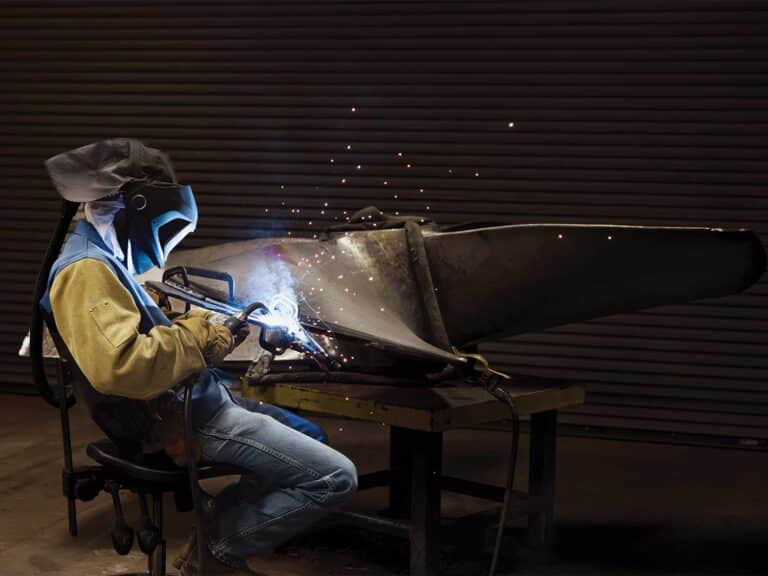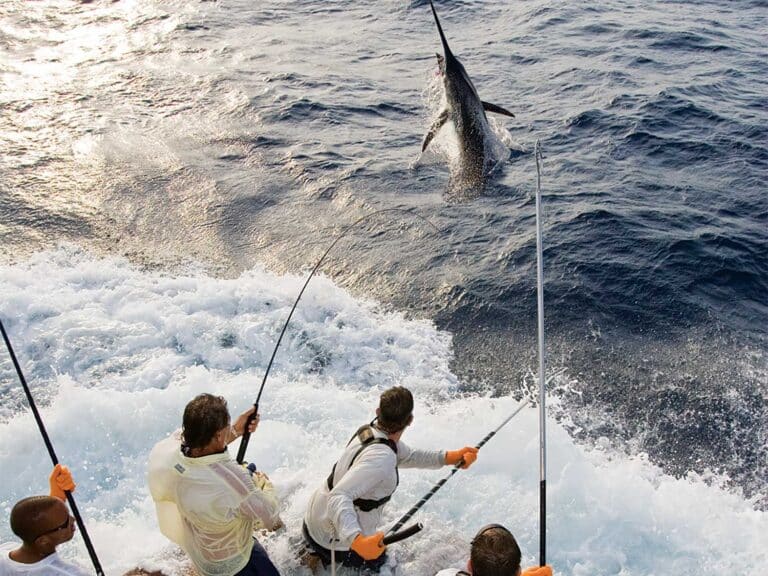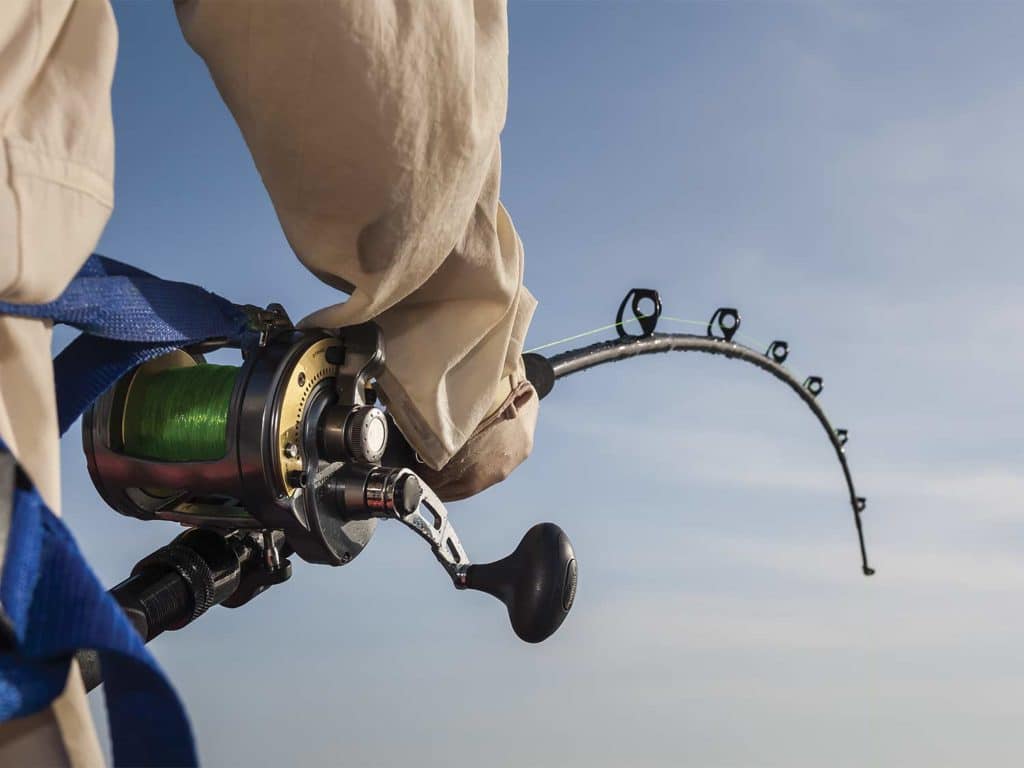
The man on the other end of the phone was noticeably hesitant, perhaps even a little embarrassed. He had spent 34 years in the quiet, comfortable background of the sport-fishing industry, most notably in North Carolina’s charter fleet, and he was most at home there, well away from the spotlight. But even for this modest man—a recently retired expert custom rod builder named Jerry Harris—there was no hiding from the immeasurable, contagious enthusiasm of friend and longtime client Capt. Fin Gaddy.
Indeed, Gaddy was the first to suggest that Marlin take a closer look at custom rod builders like Harris and their lineages within the craft, which is a blend of science, art and black magic. Harris and I shared a laugh about Gaddy’s skills of persuasion, and any ice that once may have been present between us quickly melted away. Nearly an hour later, we had covered 30 years’ worth of countless milestones in rod building, including the kind of small tweaks that can potentially change an entire industry forever.
An Unlikely Friendship
For Harris, his role as a professional rod builder began in 1984 after Billy McCaskill—a man lovingly known as “the man with the mullet,” and the owner of Whalebone Tackle in Nags Head, North Carolina—caught sight of Harris’ spray-painted 1966 Jeep Wagoneer. Harris recalls, “I drove it to Whalebone Tackle, and when they saw that piece of crap, they said, ‘This is our guy.’”
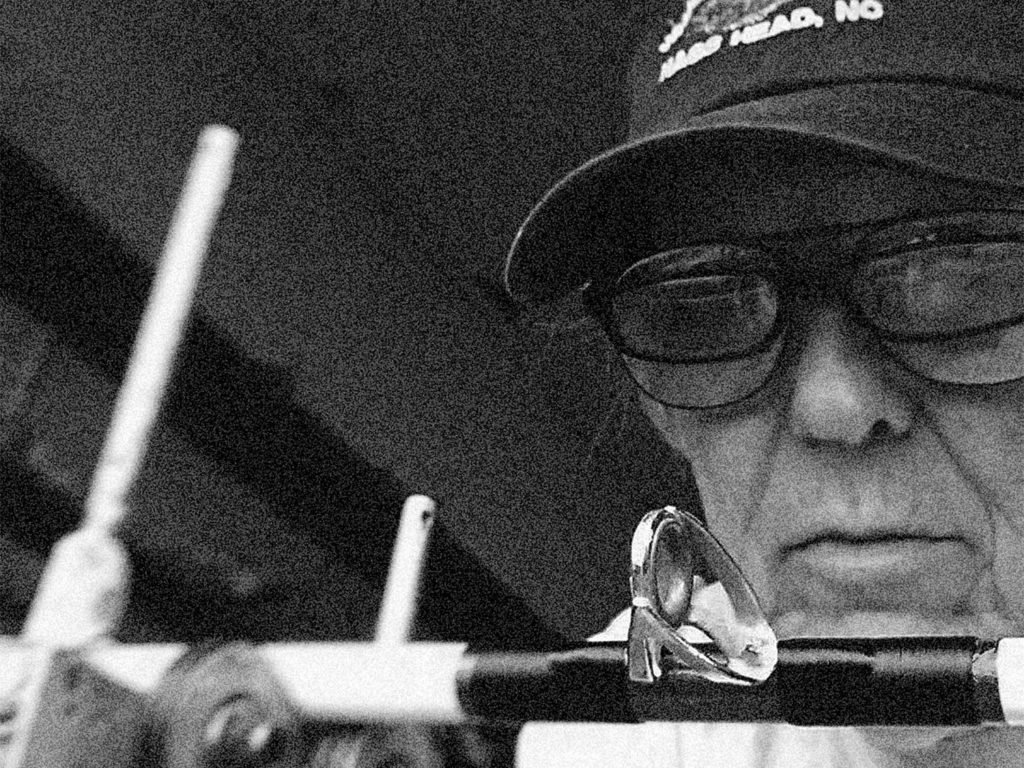
Although Harris wasn’t an avid angler, he was in some ways predisposed to naturally take to rod building. As a kid, he had spent countless hours constructing model cars, often changing the whole vehicle by putting it back together in his own way. As a result, Harris had a knack for developing new ways of solving perplexing problems, which would come in handy as styles and technologies changed within the bluewater fishing community.
When Harris landed the job at Whalebone Tackle, McCaskill taught him the ins and outs of custom rod building. Before he entered the tackle business, McCaskill worked as a charter-boat mate in the area, and he regularly modified rods based on his own fishing experiences. He felt that the ones available on the market at that time simply couldn’t meet the needs of the ever-changing fishery. He found his footing and quickly established himself as a rod builder.
Crafting custom rods is slow and careful work, so McCaskill needed a dedicated person on staff to fulfill the orders coming in from the charter and private boats in the area. Once Harris came on board, business grew measurably each year. While Harris would never admit it himself, that growth speaks to the excellent quality of his work: His rods were built to last. He instead chalks it up to McCaskill’s well-established reputation.
Travel and Innovation
During the winter months, many of North Carolina’s professional fishermen would often travel and mate on boats in Mexico, Costa Rica, and other international billfish destinations; akin to baseball’s spring training, they used that time to practice and learn new techniques ahead of North Carolina’s busy summer charter season. They took note of evolving styles and techniques in those locations and would bring home a list of rod needs for the North Carolina fishery. Folks would routinely head straight for Whalebone Tackle, where they’d find Harris carefully constructing a new set of customs in a back room alongside a noisy tank of live eels. There, captains and mates would discuss what they had in mind and, with Harris’ help, come up with solutions to lingering questions: Does the rod need to be lighter? Will the angler stand or use the chair? Does the tip need to be soft or stiff? Capt. Jimmy Grant, longtime charter and private boat captain, says: “Jerry Harris may have been in the shadows of the industry, but he built pretty much all the rods for North Carolina’s charter fleet. His rods had the best average, and people always wanted to know where they could get one.”
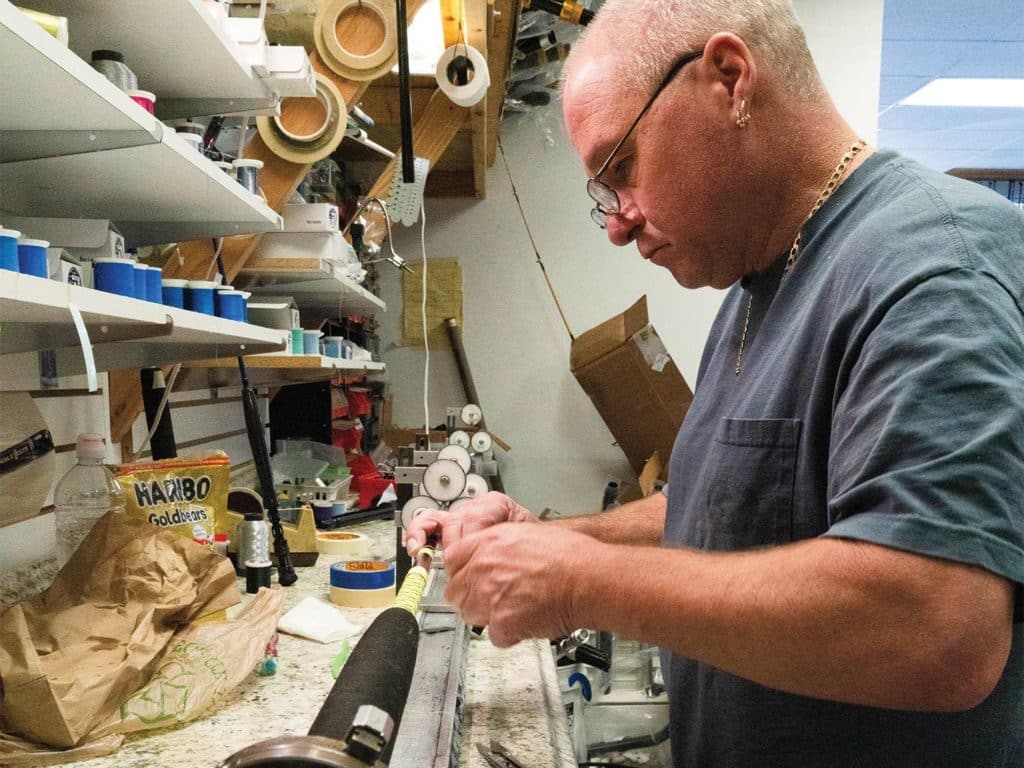
While Harris and the local charter fleet worked together to develop rods for charter boats in the Outer Banks and Morehead City, countless other rod builders were busy at work meeting the needs of fishermen in the southeastern United States. For example, Nathan Pruitt, who still builds rods today, also offered custom rod-building services in North Carolina too. Although they were operating practically next door to each another, Harris and Pruitt didn’t interfere with the other. Interestingly enough, custom rod builders seem to operate in vertical silos, with rare moments of crossover to purchase supplies from one another or to talk shop.
South to Florida and Beyond
Prominent Florida-based builders such as Crowder, Bill Buckland, and RodsbyDru have well-established reputations among charter fishermen and privately owned sport-fishing boats in the US, Costa Rica, Mexico, Panama, Bermuda, Australia, South Africa, and other popular billfish destinations. Bill Buckland’s Fisherman’s Center, a well-known tackle shop in Riviera Beach, Florida, caters to boats that travel all around the world. In addition to its tackle sales, owner Bill Buckland builds some of the world’s highest-end custom rods.
Buckland first got his start in the business in the late 1980s after he and a friend took over Fred Heidi Custom Tackle. The shop had offered custom rods globally for more than 30 years and outfitted most of the boats coming out of the busy Rybovich yard at the time. Buckland recognizes that a lot has changed since then. “Back then, rods were very basic and limited to the components available,” he says. “Nowadays, the choices for blanks, guides and butts are limitless. Customers are also much more demanding these days, especially with detailed requests for specific species.”
Some of these requests are largely due to changing norms in fisheries. As trends and regulations evolve, it’s paramount that the tools of the trade follow suit. “Custom rods have definitely evolved along with fishing styles,” Buckland explains. “Years ago, the norm was to troll with 50- and 80-pound-test tackle. With the more-recent emphasis on circle-hook fishing, rods have become lighter. Most boats are fishing 30-pound tackle now, even in tournaments. One of the biggest changes is incorporating the dredges and dead-bait fishing, which makes it much more hands-on.” In addition to these key adaptations, there have been significant changes to the materials used when building rods. Drew Thompson at RodsbyDru says: “Where we once used split bamboo, we now use fiberglass and carbon-fiber composites. With the introduction of the circle hook to sport fishing, rods changed from a stiffer parabolic bend to ones with a very light tip that loads quickly.”
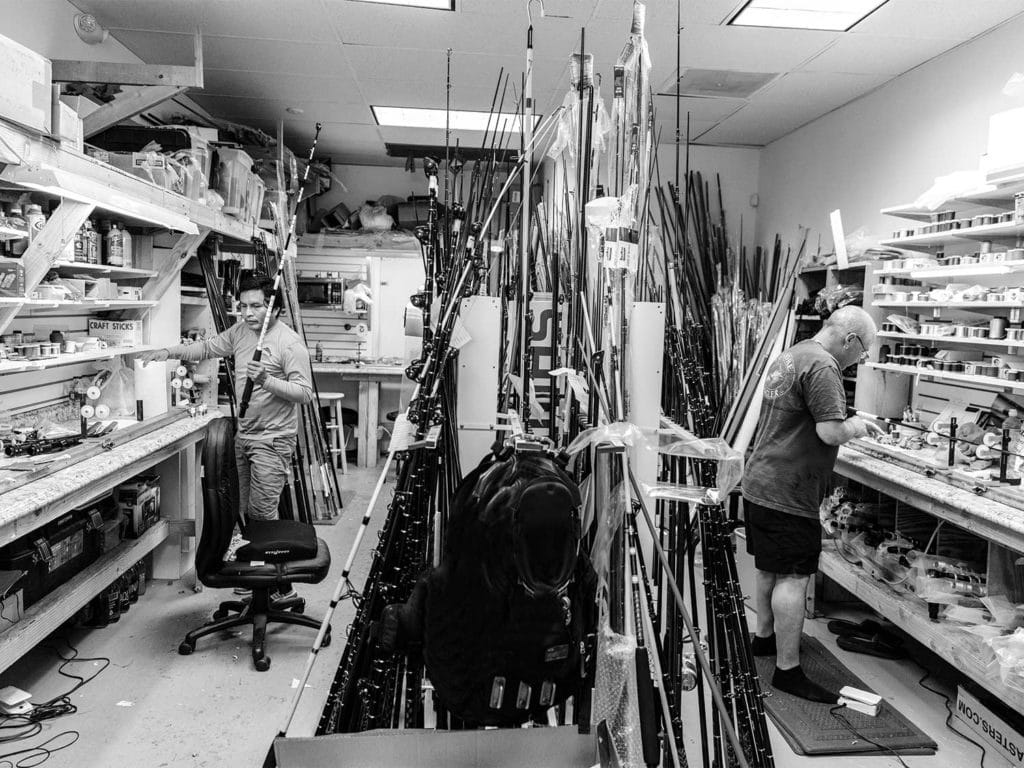
A Hands-On Craft
Thompson has been building rods professionally since 1975. He and his team use and observe crews using the rods they have built around the world, which helps the RodsbyDru brand to improve the way they build year after year. This is again proof of the crucial relationship between builders and the fishermen who use their rods. The evolution of sport fishing is entirely dependent on the ingenuity of those on the water and a trust in the tackle on deck. “Different fishing venues require specific specs for their rods, whether it’s tactical—the strength and length, tailored to the angler’s height or age—or based on their goals, like catching a 1,000-pounder or a million-dollar fish,” Thompson says. “A lot of people spend a lot of money and time to travel to exotic places to catch that one fish. They don’t want to make that kind of investment if their tackle might not stand up to the task.”
As in many hands-on crafts, mentorship is commonplace in rod building, especially pre-dating the age of the internet. It’s easy to romanticize these relationships as an outsider, looking for that storybook exchange of information and skills across generations. Thompson was lucky to have that kind of early experience with a family friend who helped get him started. “I loved to fish and wanted fishing rods for different fish, but my family didn’t have the money to buy me a bunch of rods and reels,” he says. “So my dad put me in touch with a friend of his named Colonel Geier, who knew how to make rods. The colonel thought I would stay in his garage for a day or two, but I ended up staying for years.”
Durability and Aesthetics
There are many common threads—and yes, that pun is shamelessly intentional—among rod builders in the Southeast, but one that stands out is that they each prioritize durability and quality. “We have boats catching hundreds of blue marlin a year, and the last thing you want is any type of failure,” Buckland says. “There are plenty of production rods out there, but most are built for general, basic fishing for the masses. There are big differences in production verses custom, such as blank construction, guide quality and guide placement. These components make a big difference in today’s fishing styles. When we build a set of rods, we first listen to our customers: what they like, what they fish for, and where they will be fishing.”
Once the builder can ensure the greatest durability and quality, they can next consider the rod’s aesthetics. Owners want to have a beautiful set of rods in the cockpit, an outward expression of their personal style. As you look at a marina full of sport-fishing boats during a tournament, you’ll see a stunning array of colorful rods. Whether matching the colors of a boat’s transom, boot stripe or teak, or perhaps even an owner’s favorite football team, builders get to bring their customer’s personality and design preferences to one of the most important tools on the vessel. Harris always loved that aspect of the job: “I really enjoyed matching up colors with the boat, finding the perfect spool of thread to meet the customer’s specific request. When I was designing rods for Hog Wild, I gathered pictures of the [then-named] Washington Redskins to help me find the perfect thread to match the deep, dark burgundy of the boat’s hull, which was the same as the team’s colors.”
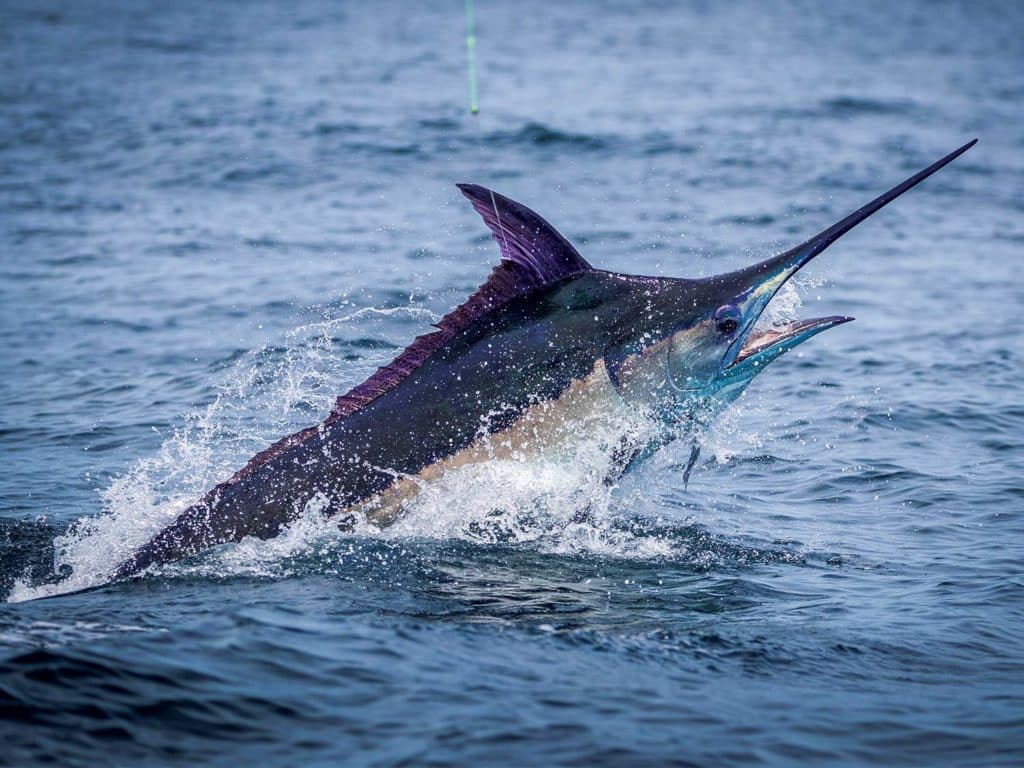
This is the playful and perhaps most immediately gratifying part of the job for both the rod builder and the customer. “If you can dream it, we can do it,” Thompson says. “We even had a client with an arm-sleeve tattoo who wanted his rods to resemble the tattoo, and we made it happen.”
The Southeast region of the US is a major hub of sport-fishing activity, so it’s no surprise that there are numerous people involved in building custom rods in the region. It’s not a new industry, especially when you account for inshore fisheries and fly-fishing. In truth, people have been designing fishing rods since we first learned how to use and make tools. Those early hominids sure laid the groundwork for a burgeoning industry.
Read Next: Meet Viking president and CEO Pat Healey in our exclusive interview.
To build a single rod, it takes a vast village. While the rod builders engineer and design the tool, taking on the most hands-on role, there are many other important players involved in the process. For builders that don’t have direct access to particular components that might not be available to the public, like certain guides or blanks, tackle shops are the linchpins of professional rod building. Shops such as Merrick Tackle in Shandaken, New York, helped make rod blanks and other critical components available to professionals like Harris, as well as the at-home tinkerer. The original owners, the Greenberg family, were well-known for supplying builders and anglers all across the US. In fact, when I was discussing rod building with my father, he mentioned Merrick Tackle and how knowledgeable and helpful they were when sourcing materials for fly-tying and rod building years ago. Harris recalls: “When stand-up rods first came out in California, the charter fleet in North Carolina wanted them. But they had to be modified to fit the fishery here. I turned to Scott Greenberg for advice on what adjustments should be made, and the design worked for a couple of years, until the fishery changed again.”
There are countless ways to learn how to build your own rod. But with the folks and businesses like those mentioned here, as well as the many talented others involved in custom rod building that we could spend a lifetime covering, the customer benefits from decades of incredible craftsmanship, artistry and engineering. And you can trust that they will be on the front lines of the latest in rod building, working hard to bring you their best. “Like many outdoor activities during the pandemic, the sport-fishing and boating business has never been better,” Buckland says. “The custom-rod business has also been very strong, and I don’t see any slowdown in the next few years.”
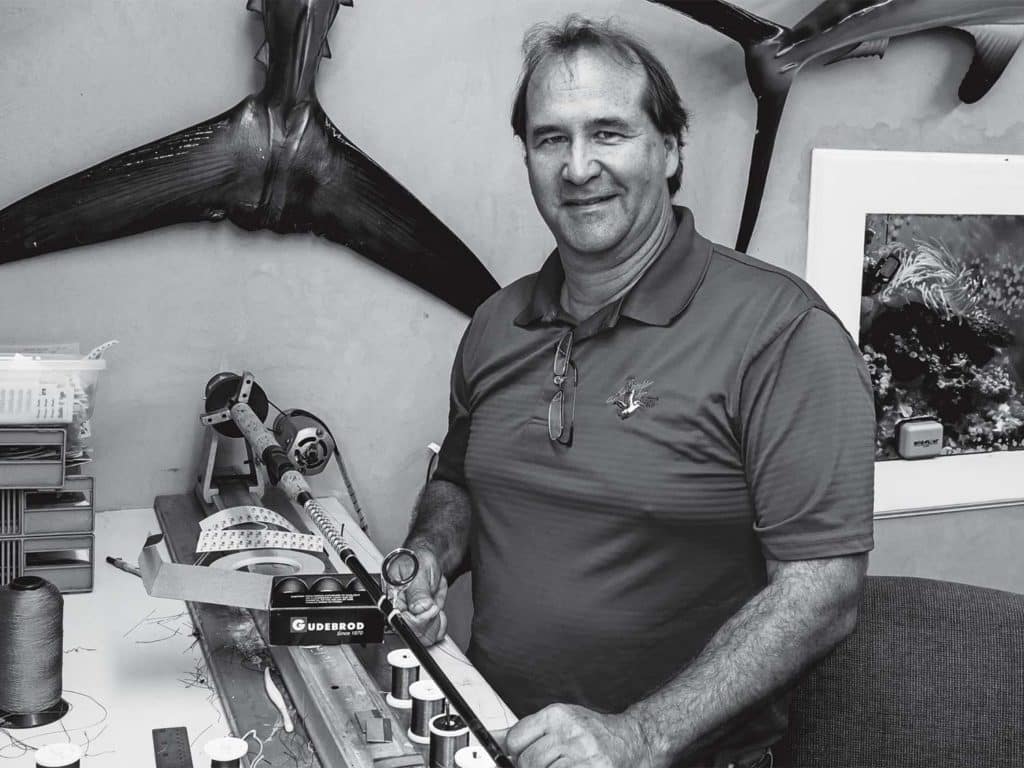
A Legend Retires
Following a bad car accident a few years ago, Harris took a break from rod building. During that time, Whalebone Tackle sold. The small shop was home to infinite memories for Harris and his family. Harris’ vision is no longer as reliable as it once was, which understandably makes custom rod building exceptionally challenging, so he hung it up altogether and finally retired from a long and storied career, with thousands of custom rods bearing his name.
There’s a palpable mixture of relief and melancholy in that. Rod building can be stressful, especially when trying to meet demanding deadlines. Harris admittedly doesn’t miss the stress. He does, however, miss the questions about new designs and parts, the constant need to be resourceful when manufacturers discontinue a blank or a guide, but most importantly, he misses the visits and phone calls from captains with new challenges. After building an estimated 3,000 custom rods, Harris still reflects most on the people in this sport and their unchecked creativity and ingenuity.
Just before we hung up, I told Harris I’d follow up with him if I had any additional questions. Our conversation felt so comprehensive that I didn’t expect I’d need to reach out again, at least not for more information. Much later, I texted him to see if he could send me some pictures to be considered for use in this article. He sent me a few nice photos of rod decals that he had designed. Minutes later, my phone buzzed again. Harris had sent along photos of him and his young granddaughter in matching wigs— think Garth from the movie Wayne’s World. I laughed out loud. Harris is right. It’s the wonderfully funny, creative, fanatical and kind people in this sport who leave the most meaningful impressions on us all.
This article originally appeared in the February 2022 print issue of Marlin.
